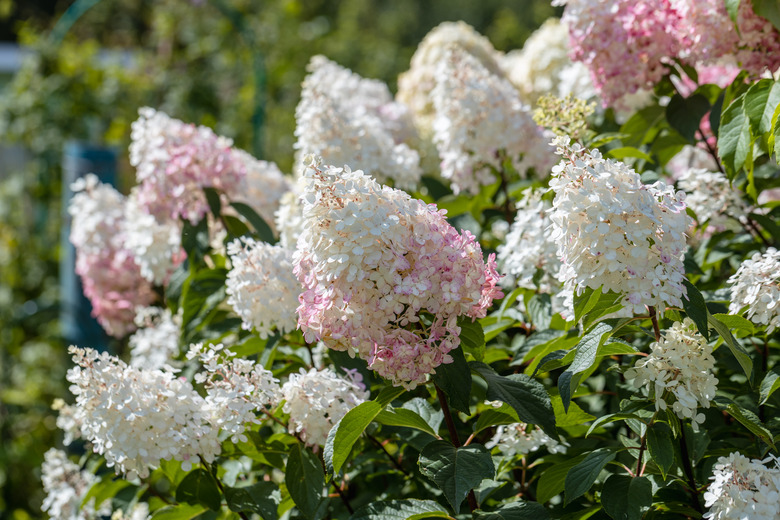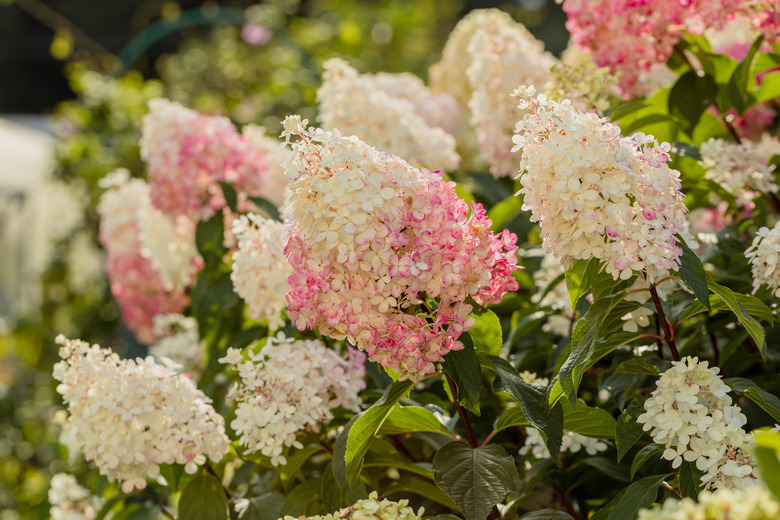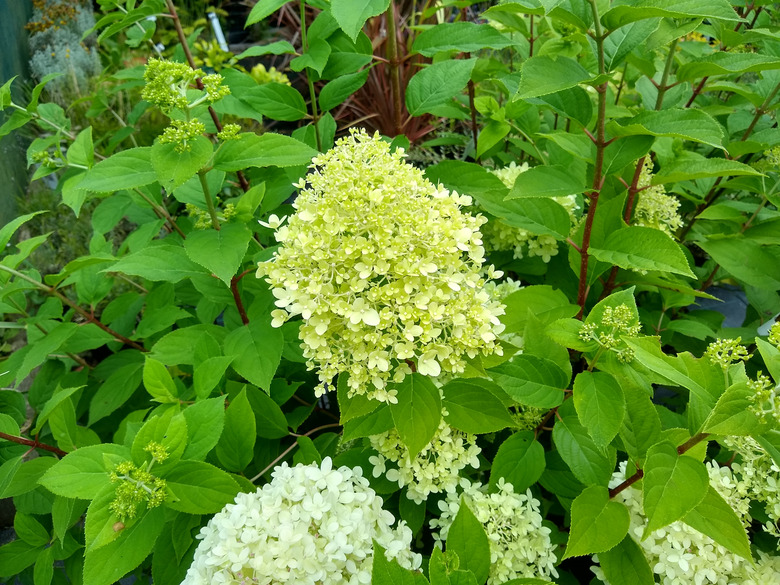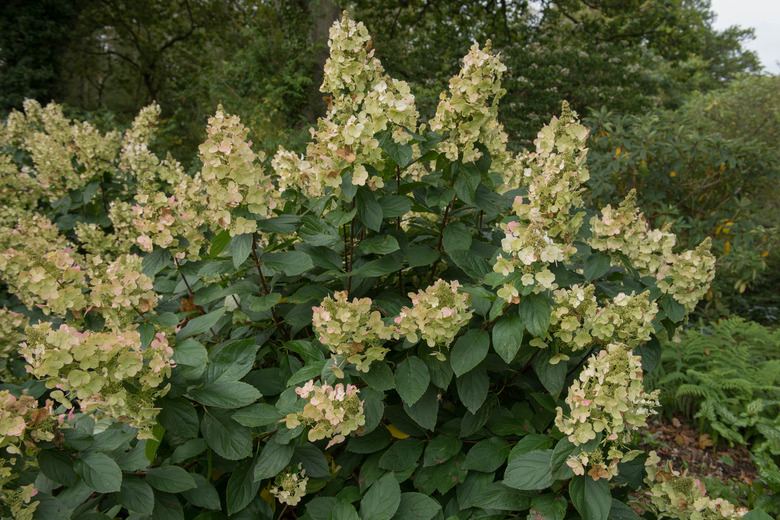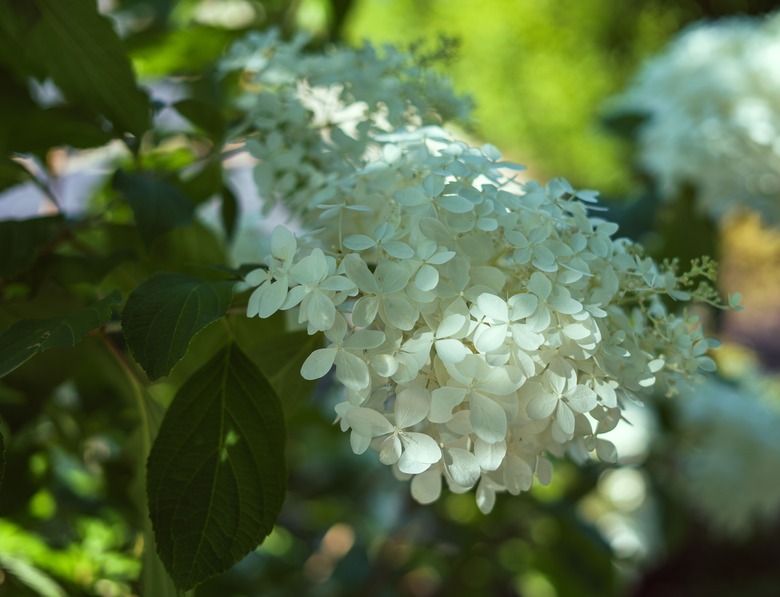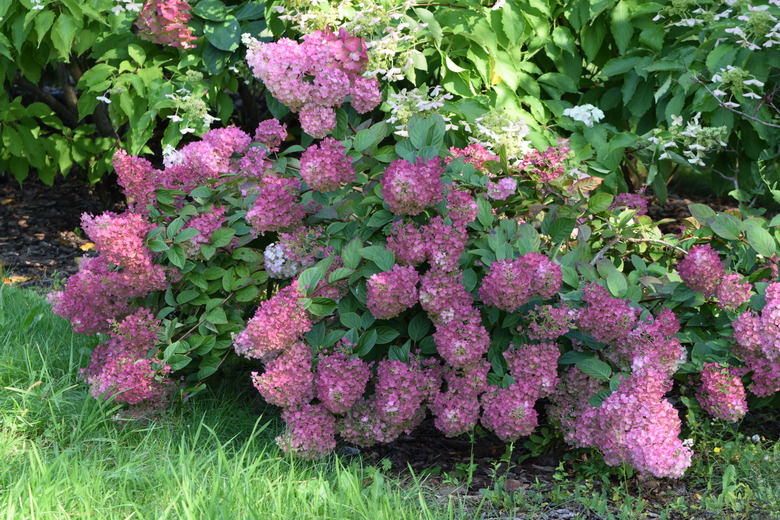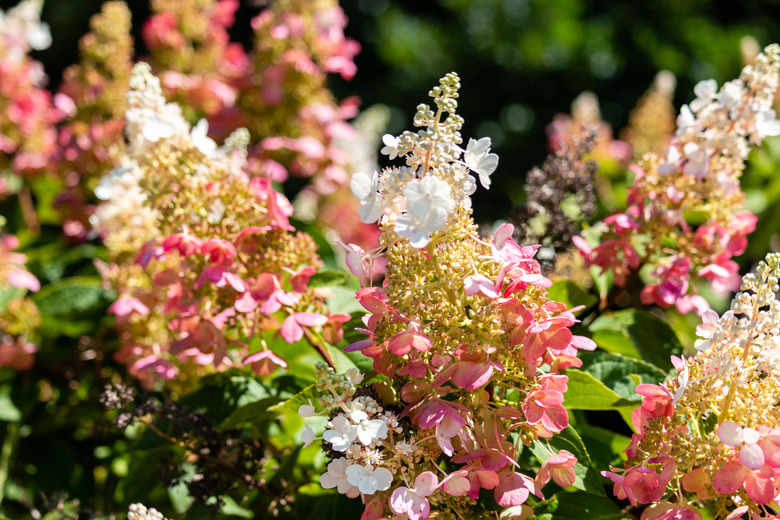Hydrangea Tree Varieties
Panicle hydrangeas (Hydrangea paniculata) often develop a tall, open-crowned shape as they mature, earning them the common name "tree hydrangea." These showy, deciduous shrubs or small trees grow best in USDA plant hardiness zones 3a to 8b, where they are often grown in groups as a hedge or screen or alone as a focal point in the garden.
Several cultivated varieties of tree hydrangeas are widely available in garden centers. These cultivars produce flowers of different colors and have varying degrees of cold hardiness. However, all tree hydrangeas share a similar growth habit that helps them stand out from other hydrangea varieties.
About Hydrangea Trees
**Most panicle hydrangeas reach a mature height of 8 to 10 feet, although some can reach a height of up to 25 feet.** They have a naturally tree-like shape, which can be further enhanced with the right pruning to lift the crown.
The outer branches produce showy flower heads in a variety of colors, although creamy white and green flowers are most common. The bloom time of panicle hydrangeas starts in mid-summer and extends into fall, when flowers shift color to pinkish-brown.
Panicle hydrangeas grow best in full sun or partial shade. Fertile, well-draining soil is best for growing these vigorous shrubs. Unlike some other hydrangeas, tree-form hydrangeas do not tolerate alkaline soil and need neutral to mildly acidic soil pH to grow well.
Varieties of Hydrangea Trees
Dozens of types of hydrangea trees are available to home growers. All share a similar growth habit, but they range in size from dwarf, tree-like shrubs to small trees.
Limelight Hydrangea
Limelight hydrangea shrubs (Hydrangea paniculata 'Limelight') are the most popular and widely grown tree hydrangeas. This variety grows best in USDA plant hardiness zones 3 to 9, where it provides fall color with its football-shape clusters of pale chartreuse flowers.
Limelight hydrangea trees withstand drought and will tolerate harsh winter conditions, so they are an adaptable choice for gardeners in many different growing zones and climates.
Tardiva Hydrangea
Tardiva hydrangea plants (Hydrangea paniculata 'Tardiva') stand out among other tree hydrangeas with their color-changing flowers, which shift from creamy white to purplish-pink as they mature. This showy hydrangea bush grows best in zones 3 to 8, where it will quickly reach a mature height of 8 to 12 feet.
The flowers of the Tardiva hydrangea tree are less densely packed than those of other panicle hydrangeas, which gives the plant an airy appearance.
Pee-Gee Hydrangea
Pee-Gee hydrangea (Hydrangea paniculata 'Grandiflora') trees can reach a mature height of 10 to 20 feet with an equal spread. It grows best in zones 3 to 8, where it produces conical creamy-white flower clusters from late summer to early fall.
Pee-Gee hydrangeas are a large variety that need judicious pruning to create a tree-like shape.
Strawberry Sundae® Hydrangea
Strawberry Sundae® hydrangeas (Hydrangea paniculata 'Rensun') only reach a mature height of 4 to 5 feet, making them a smaller tree hydrangea variety. This cultivar grows best in zones 4 to 8, where it fits into smaller areas of the garden where larger tree hydrangeas won't fit.
Strawberry Sundae hydrangeas earned their name with their color-changing flower clusters, which start out white and turn a vivid strawberry pink as the season progresses.
Vanilla Strawberry Hydrangea
Vanilla Strawberry hydrangeas (Hydrangea paniculata 'Renhy') grow best in USDA zones 4 to 8, where they reach a mature height of 6 to 7 feet.
These striking flowering trees or shrubs bloom from mid-summer into autumn, producing flowers that start out a pure creamy color before shifting slowly to pink and then eventually burgundy.
Pinky Winky Hydrangeas
Pinky Winky® panicle hydrangeas (Hydrangea paniculata 'Pinky Winky') produce two-tone flowers with pinkish blooms at the base and creamy white blossoms at the tip. They grow best in zones 3 to 8, where they reach mature heights of 6 to 8 feet.
Pinky Winky hydrangeas respond well to pruning and can easily be trained to take on a tree-like shape.
Growing Hydrangea Trees
Most panicle hydrangea trees share similar growing and care requirements. They need full sun in the morning and some partial afternoon shade. As a general rule, a hydrangea flowers best with shade on its roots and sun on its foliage.
- Provide 1 to 2 inches of water during the growing season, but water only if the soil feels dry just below the surface.
- A 3-inch-thick layer of mulch over the root ball will help keep these moisture-loving perennials growing well. Just be sure to leave a gap between the mulch layer and the base of the trunk.
- Feed panicle hydrangea trees with low-nitrogen fertilizer, such as 7-9-5, which will encourage blooming. Apply the fertilizer in two applications in mid-spring and mid-summer.
- Prune your panicle hydrangea to encourage a tree-like shape by removing the side branches from the bottom one-third of the trunks, which will lift the leafy crown. Panicle hydrangeas bloom on new wood, so prune in late winter before new growth emerges in early spring.
Tip
Sanitize your pruning shears by dipping the blades in household disinfectant cleaner, which will kill off harmful bacteria and fungi.
References
- North Carolina State Extension: Hydrangea paniculata
- Fine Gardening: 'Tardiva' Panicle Hydrangea
- North Carolina State Extension: Hydrangea paniculata 'Grandiflora'
- Proven Winners: 'Limelight' Panicle Hydrangea
- Proven Winners: Pinky Winky Panicle Hydrangea
- Nature Hills Nursery: First Editions® Strawberry Sundae® Panicle Hydrangea
- White Flower Farm: Hydrangea paniculata Vanilla Strawberry
